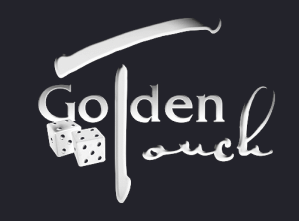
Golden Touch Craps
Where Are the Five Dollar Tables?
By Bill Burton
One of the questions/complaint I am always asked it, "Why are table limits so high? Why don't casinos have more tables for the five dollar player?"
Unfortunately it is a matter supply and demand. Areas with only one or two casinos and even larger gaming destinations on a weekend all suffer from the lack of tables to accommodate the lower limit players. Since there are more players than table spaces the casinos can raise the limits and still fill many of the seats. The sad reality is that, it also makes more economic sense to the casino to have higher limit tables even if some of them are not full.
We have all been to the casino on a crowded night and seen and empty table. We rush over only to find that the table limit is a minimum of $25 or $50 per hand. We wonder why they can't change the empty table to a five or ten dollar table to accommodate the lower limit players. Incredulous as it may seem, the "bean counters" have determined that a table with a higher limit will make more money even if it is empty for hours at a time. I read about the reasoning behind this in Casino Operations Management, which is the textbook used at UNLV in their casino management course.
Although the house edge is about a half of one percent for a Blackjack player using basic strategy, the casinos make far more than that at the tables. Their hold on the game can be 16 - 20% in some instances. This is because very few players adhere to correct basic strategy. For rating purposes, management uses an average advantage of 2.5% as a base for calculating the edge over a player. They then adjust according to the skill level of the player. To simplify matters I will use a house advantage of two percent in calculating this example. The other factor in the equation is the speed of the game. The speed is determined by the number of players at the table and is measured by hands per hour (hph):
Slow = 60 hph. This would be a full table of six or seven players.
Medium = 80 hph. Two or three players at the table.
Fast = 120 hph. One player heads up with the dealer.
Look at the chart below showing how much money the casino would expect to make at a table per hour based on the number of players, speed of the game and the minimum bet. The house edge is calculated at 2 percent.
|
# players |
Minimum bet |
Hph |
Total bet |
2% profit hr. |
|
7 |
$5 |
60 |
$2,100 |
$42 |
|
2 |
$25 |
80 |
$4,000 |
$80 |
|
1 |
$50 |
120 |
$6,000 |
$120 |
|
1 |
$100 |
120 |
$12,000 |
$240 |
Based on the figures in the chart the casino has determined that a full table of five-dollar players will net them a profit of $252 after six hours of play. They can make almost that much in half the time with two $25 players. They can make that in about an hour with a single player at $100 table. This is the reason why you see escalating table limits in a crowded casino.
What can you do?
There is not much that can be done. It is a fact of life and a business decision. Some casinos have adopted a policy to keep at least one table at the five-dollar tables:
1) Plan you casino visit on a week day.
2) Avoid weekend nights.
3) If you can only play on the weekend, go early in the morning and plan other activities in the evening when the casino gets crowded.
4) Learn to play video poker and play the quarter machines.
High table limits are no fun for the player with a smaller bankroll who can only afford to play in the low limit games. The one thing you dont want to do is sit down and play at a table with higher limits than you can afford. Higher table limits are just something you have to be prepared for in areas with a limited number of casinos, but if you follow the advice above you should be able to have an enjoyable time.
Until Next time remember:
Luck comes and goes.....Knowledge Stays Forever!


